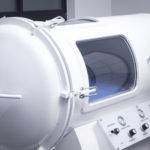They’re creepy, they’re crawly, they’re the creatures you don’t want to lay down with at night – bed bugs.
If you’ve ever suspected you have bed bugs, you’ve probably lost sleep over the idea that these tiny critters were feeding off your blood at night.
In addition to causing us to lose sleep, these insects leave bite marks from feeding. These bites can become itchy, resulting in intense scratching and a higher risk of infection.
If that wasn’t bad enough, research shows that bed bugs can transmit parasites through their feces, including the deadly disease Chagas. It’s not common but the potential is there.
To avoid any and all of these problems, here’s an explanation of how to detect bed bugs.
How to Detect Bed Bugs: Know What They Look Like
The common bed bug, Cimex lectularius, aren’t always visible depending on where they’re hiding and what part of the life cycle they’re in.
Even if you don’t see the bugs themselves, it’s likely that you’ll find the eggshells and moltings of bed bugs, as they shed their layers 5 times through their 7-part life cycle.
Eggs
To start, the eggs are white and tiny, approximately 1mm in size. An adult female can lay 1 to 3 eggs per day, so it’s likely that you’ll find many eggs.
Once the bed bug is old enough to hatch, it will leave behind the white shell.
Nymphs
A bed bug lives in the “nymph” stage for the 2nd-6th part of its life cycle. The nymphs require at least one feeding before advancing to the next stage.
They grow from 1.5mm to 4.5mm throughout this process, molting each time they grow and are typically translucent or whitish-yellowish.
This stage can be difficult to identify bed bugs if they aren’t fed because of their size and color.
Adults
Adults are easier to spot – they’re about 5-7mm long and are brown, flat, and oval-shaped.
If they’ve fed recently, they’ll appear reddish, more inflated, and longer.
Once you know what they look like, detecting their presence is a matter of looking in the right places.
Where to Look for Bed Bugs
Bed bugs seek their host by detecting human odors and chemicals. They may travel up to 20 feet for a feeding.
They create established hiding places, called harborages, where you can find a large amount of them, should you have an infestation.
Bed bugs are the width of a credit card, so they may hide in any crack or crevice that small. Check in and around the bed (down to the bed tag), the bed frame, and the surrounding furniture.
If they’ve had a lot of time to reproduce, you may find them in drawers, electrical sockets, and on garments.
If you can’t find where they’re hiding, look for their remains.
What They Leave Behind
Aside from eggshells and molts, bed bugs leave dark spots the size of a dot on your sheets and where they’re hiding. This is their excrement, which looks like a pen point that’s bled on the sheets.
Additionally, you may find rusty or reddish stains on the bed or bedding from when bed bugs get crushed.
Get Rid of Bed Bugs Immediately
If you suspect you have bed bugs or find these signs, call a professional.
Exterminators can use heat or cold treatment, but either way, it has to be extreme temperatures to kill these pests.
Be sure to find out ways to get rid of bed bugs from professionals online or through a consultation. You don’t want to wait and get a serious infestation.
Sleep Well
Now that you know how to detect bed bugs, you can sleep well.
If it turns out you were right about your suspicion, call a professional immediately.
Otherwise, keep reading our blog for more informative articles.

